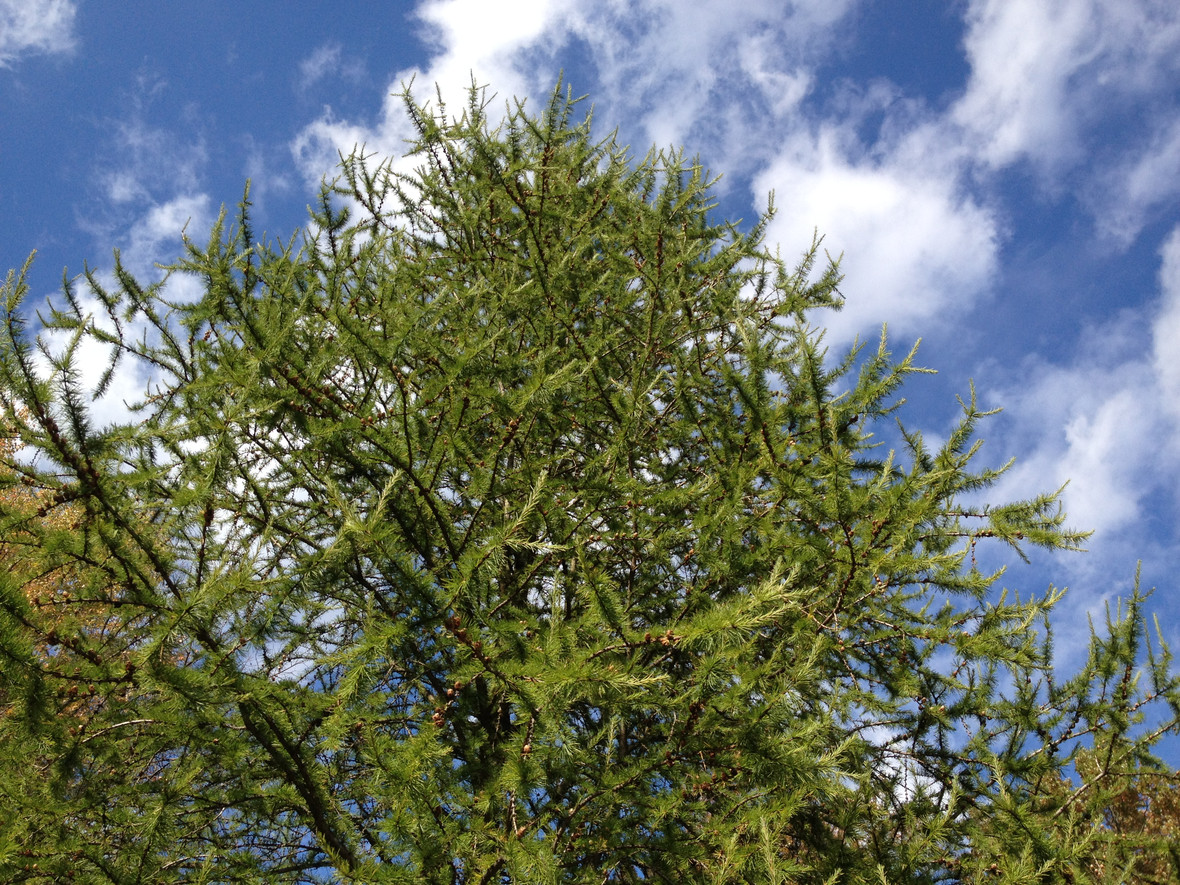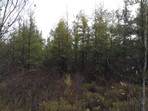Tamarack in Northeast Ohio
I was surprised to find that Ohio has the southernmost stands of naturally occurring tamarack in North America. Dotted throughout northeast Ohio are several kettle bogs left over from the last ice age. These kettle bogs represent a unique ecosystem where plants that normally thrive much farther north will grow. The southernmost stand is near Kent, OH and has many mature tamarack along with young saplings. The peet laid down through the centuries keeps the soil cooler than the clay soils that predominate around northeast Ohio. My wife and I visited a few of these bogs last fall.
Tamarack, like the bald cypress and dawn redwood, is one of the few conifers that sheds its leaves in the winter. The needles are attached to the branch in small circular bunches and are very soft to the touch. They look like they would be prickly, but they feel like the dangly rubber on a koosh ball. Their cones are upright on the branch as opposed to dangling underneath. The cone positioning and needles are very reminiscent of the true cedars, like the cedar of Lebanon. Tamarack cones, however, do not disintegrate on the branch. They can be found intact on the ground around the tree.
They do not grow to great height or great age. Honestly, they are pretty average trees. What makes them interesting in Ohio is the fact that they really shouldn't be able to thrive this far south in North America. They seem to be doing well. There are healthy old trees and many young saplings.
If you are a tree geek and are passing through Ohio, I recommend stopping in Kent, OH to check out this relictual ice age ecosystem.




